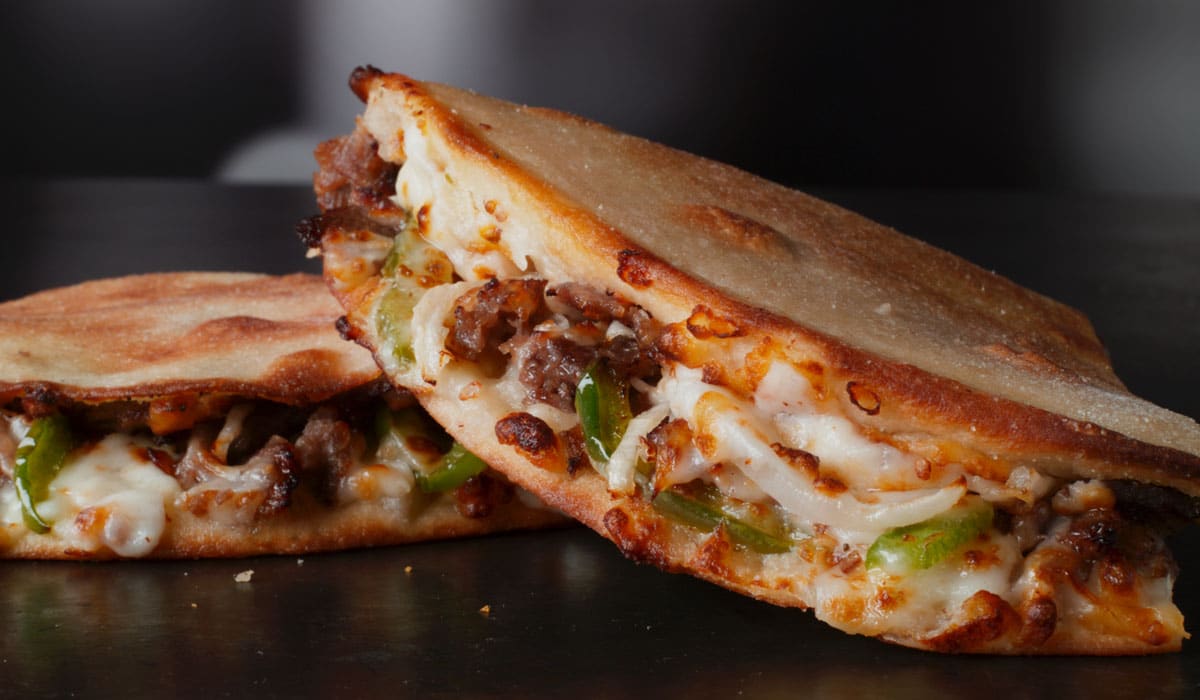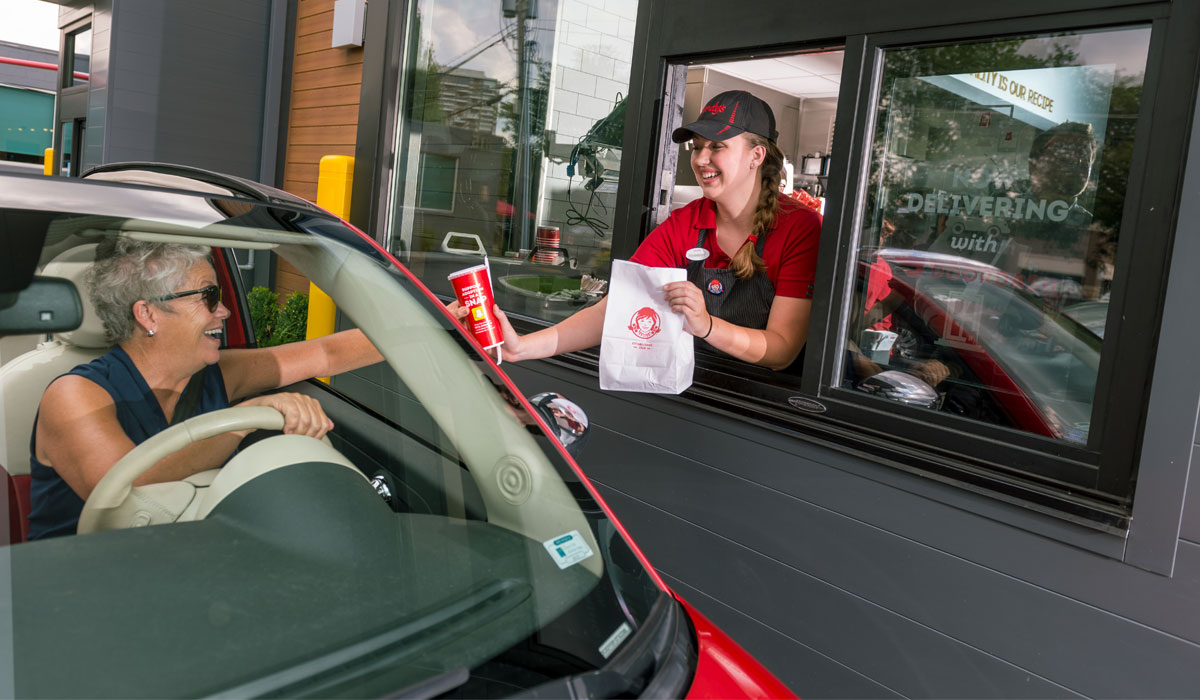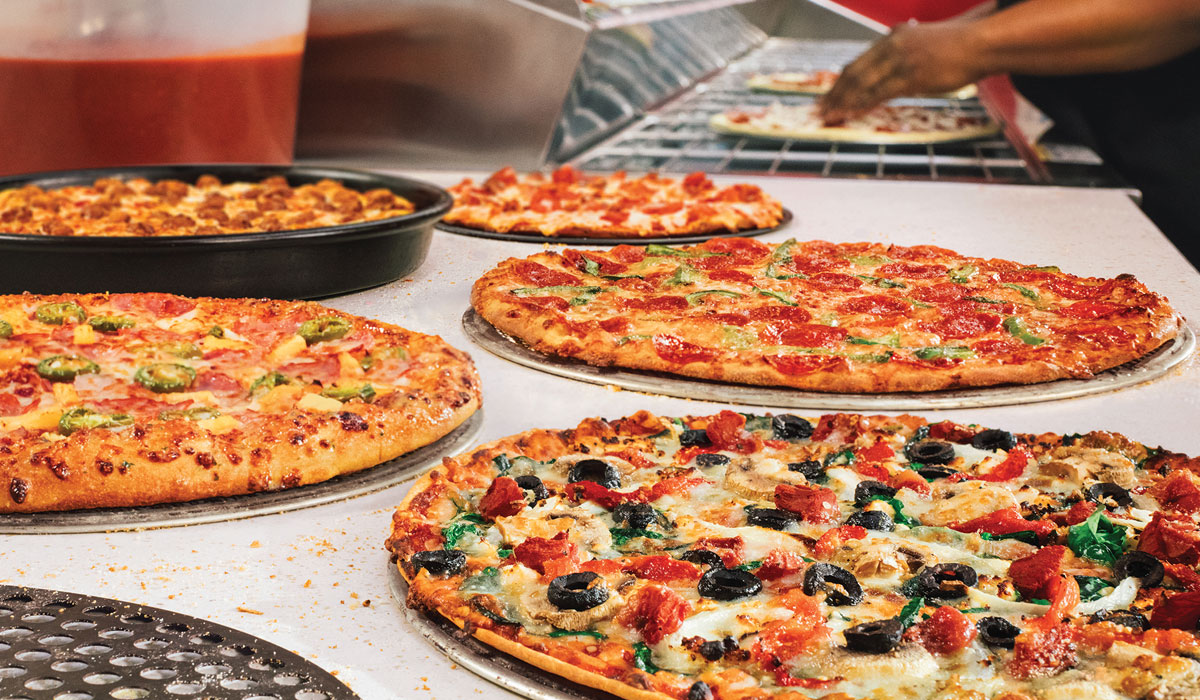Life after COVID-19. It’s hard to imagine for restaurant operators as we stand today, especially with President Trump warning Americans Tuesday to expect a “painful” and “tough” two-week stretch. But the day will arrive, and with it, a very different foodservice landscape. While the vast majority of operators remain in survival mode, keeping an eye on the future could serve as a guidepost for some drastic, business-shaking decisions in the coming days and weeks.
BTIG analyst Peter Saleh shared five predictions Wednesday for the restaurant sector during and after the coronavirus outbreak.
Who is closing, and what does this mean?
The National Restaurant Association recently suggested that 3 percent of all restaurants have already permanently closed, and that 11 percent could join in the next 30 days. It makes Grubhub CEO Matt Maloney’s earlier comments—that up to 30 percent of restaurants could shutter—seem less extreme. As explored earlier, 30 percent is a massive figure. In August 2018, according to The NPD Group, there were 660,755 restaurants. Chains made up 307,940 of those.
And what we know from recent yearly trends is that industry expansion is crawling. It basically ground to a halt in 2019. So that 2018 figure is probably pretty close to 2020’s reality pre-coronavirus.
STAY UP TO DATE WITH OUR CORONAVIRUS LANDING PAGE
Thirty percent of 660,755 is 198,226 restaurants, give or take. To the Association’s 30-day estimate, 11 percent would represent 72,683. Those are staggering possibilities.
Saleh believes independent restaurants are going to cede the most market share to chains as a result of COVID-19. And it will be especially pronounced among pizza brands, accelerating a recent trend born out of its fragmented nature (independents account for roughly half of pizza sector sales). Saleh expects Domino’s and Papa John’s, in particular, to pull share from independents thanks to their franchisees’ stronger financial position, greater mix of delivery and carryout sales, and lower digital ordering costs versus third-party platforms.
The reason Pizza Hut was not included in Saleh’s prediction, most likely, is because the brand appreciates more dine-in business than top-tier counterparts, at roughly 10 percent. That number has shrunk in recent periods, but it’s possible COVID-19 slows the Yum! Brands’ chain’s progression to a more carryout friendly fleet of restaurants. More on that here.
Food away from home accounts for a slight majority of U.S. consumers’ total food expenditures (54 percent). Full- and limited-service restaurants make up 73 percent of that spending. Chain restaurants, based on data from the Association and NPD, accounts for a majority of restaurant sales at 60–65 percent, and a slight minority (47 percent) of restaurant units. That equates to chain restaurants totaling roughly 25 percent of all food expenditures.
The remaining 35–40 percent of units? That belongs to independents, or 15 percent of total food expenditures. And those independents have a much larger presence in full service, which brings Saleh to his main point. COVID-19 shattered the industry dynamic mainly because it curtailed use of dining rooms. Restaurants have been forced en masse to pivot to off-premises-only sales. See graph below.
Naturally, this hit the full service and independent sector like a sledgehammer. It also needs to be considered—in the independents versus chains conversation—how many of these single-unit concepts have limited access to credit. “We believe this will likely cause greater disruption across the full service and independent restaurant segments and drive many small operators to file for bankruptcy,” Saleh wrote.
You see this painful reality unfurling already with some of the best operators in the game, from Danny Meyer to David Chang to Tom Colicchio. The first is considered by many to be one of the most successful hospitality professionals of his generation. And he was left no choice but to lay off 80 percent of Union Square Hospitality Group’s staff in the early days of COVID-19. That was more than all the people Meyer’s company hired in the first two-plus decades of business.
Chang recently told The New York Times, “I do not want to incite panic and hysteria, but I think for restaurants and the service industry, there is going to be a morbidly high business death rate. My fear is the restaurants that survive are going to be the big chains, and we’re going to eradicate the very eclectic mix that makes America and going out to eat so vibrant and great.“
In the Association’s survey, it also found 44 percent of operators temporarily closed and 54 percent shifted to off-premises sales only. Many early studies have shown that sit-down brands are averaging just about 10 percent of typical weekly business through those channels. Landry’s, which furloughed 40,000 employees, told Bloomberg its restaurants without dining rooms were bringing in just 4–5 percent of normal sales. Here’s more on that dynamic and some best practices for making the switch.

Diving deeper into the pizza conversation, it’s easily the most split category within quick service. It’s the only segment where independents still represent a majority (52 percent) of sales. And the largest concept only appreciates 20 percent share (Domino’s).
Look at how that compares to other segments, based on BTIG estimates, NPD, and company documents.
Major chains’ market share among quick-service categories
- Hamburger: 95 percent
- Mexican: 86 percent
- Sandwich: 73 percent
- Pizza: 48 percent
Essentially, large quick-service chains have very little to gain from smaller, independent operators is all of these segments, except pizza.
The potential result, Saleh said, is the COVID-19 period of sales disruption will force many weaker independent and small chain pizza operators out of the business. In turn, brands like Domino’s and Papa John’s will grab share by the box full. Pizza Hut will, too. Only there will be some negative headwinds during the process tied to the dine-in drag. But it doesn’t change the opposite-spectrum reality, either.
While pizza independents have a healthy mix of delivery sales that should hold up relatively well, Saleh said, they still rely on their dine-in business for a significant portion of revenue. Much more so than Domino’s, where upward of 70 percent of business flows through digital ordering channels. North of 90 percent of international markets feature online ordering.
Compounding this, Saleh expects consumers to shift purchasing habits toward value offerings and bundles as the economy heads into a likely recession. Domino’s is almost surely not going to move off its $5.99 Mix and Match platform or $7.99 carryout offer. Papa John’s has kind of fluctuated value messaging over the past couple of years, relying historically on its ingredient-forward approach over price points. But CEO Rob Lynch did say in February, “I really do believe there is an opportunity to improve our value perception among our customers by optimizing how we manage our pricing across our core and promoted price points that we are not focused on delivering the cheapest pizza that we can make.” The former Arby’s president, who joined Papa John’s in August, has driven much more robust menu innovation, like Papadias, in recent months. Pizza Hut, just this week, unveiled one of its biggest offers to date: a large, three-topping pizza for $9.99.
Here’s a look at the pizza category market share, per BTIG data, as well as QSR 50 figures.
Domino’s
- Units: 6,126
- System sales 2019 ($MM): $7,050
- System sales 2020 (estimate): $7,700
Share of category
- 2019: 18.7 percent
- 2020 (estimate): 19.9 percent
Pizza Hut
- Units: 7.306
- System sales 2019: $5,500
- System sales 2020 (estimate): $5,350
Share of category
- 2019: 14.6 percent
- 2020 (estimate): 13.8 percent
Little Caesars
- Units: 4,250
- System sales 2019: $3,800
- System sales 2020 (estimate): $3,850
Share of category
- 2019: 10.1 percent
- 2020 (estimate): 9.9 percent
Papa John’s
- Units: 3,142
- System sales 2019: $2,650
- System sales 2020 (estimate): $2,700
Share of category
- 2019: 7 percent
- 2020 (estimate) 7 percent
Total overall:
- System sales in 2019: $19,000
- System sales in 2020 (estimate): $19,600
Share of category
- 2019: 50.3 percent
- 2020 (estimate): 50.6 percent

Daypart thoughts
Saleh pegged casual-dining leader Texas Roadhouse as the best in its category to weather the COVID-19 storm. While difficult to estimate the dine-in ban timeline, Saleh believes we could be looking at several months or quarters until a vaccine and/or therapeutic remedy is readily available. Texas Roadhouse has some $300MM in available cash and $500MM worth of land, as well as very low financial leverage (0.5x). It also has the ability to increase its available credit facility, Saleh said, leading to its position of surviving at least through the summer without further financial assistance.
Also, in the past, Texas Roadhouse only offered dinner, with most locations opening around 4 p.m. Given recent dining-room closures, the company shifted operating hours to offer lunch, however, opening at noon and closing at 8 p.m. So, although all of these sales are for take-out, Saleh said, the ability to offer a new daypart should enable Texas Roadhouse to offset some of the sales declines it endured in the p.m. hours. Additionally, Saleh said, the chain could gain share from many independents when the industry exits this period of social distancing. He added he would not be surprised if Texas Roadhouse continues to offer lunch for an extended period to recoup some lost sales.
On the quick-service side, Saleh said, brands like Wendy’s that can expand into new dayparts (breakfast in this case) would be wise to do so. What was once an incremental goal, can now turn into a much-needed source of revenue. Consider late-night, drive-thru business if possible (and not offered before). Saleh also suggested Chipotle has the potential to expand into breakfast, leveraging its existing asset base and helping pay employees along the way.
About potential relief
Despite the many hurdles and issues to address, it’s a sure-fire bet many franchisees and restaurants will qualify for small business loans/grants under the CARES Act. Saleh said the bill stands to benefit the quick-service sector, which is already better off than casual dining given its drive-thru footprint and “essential” business designation that comes with higher franchise mix.
The new legislation enables restaurants, foodservice, caterers, and hotels that employ no more than 500 people per physical location of the business to receive a single loan for the lesser of 2.5 times their monthly payroll, or $10 million. These funds can be converted into grants (forgiven loans) if franchisees use the funds for payroll, rent or utilities. This is a complex and evolving situation, though, as the Association pointed out this week.
Saleh said he expects nearly all quick-service operators to tap this fund to increase liquidity, but the net beneficiaries of this capital will be concepts with healthy sales during COVID-19. For instance, in the case of Papa John’s franchisees, the assistance could represent nearly three times the royalty relief operators received over the past year (about $15,000) to offset sales declines stemming from negative publicity. “While this assistance didn’t completely stop unit closures, it aided franchisee cash flows enough to prevent more widespread closures. We expect Papa John’s franchisees to hire more drivers and use funds from the CARE Act to pay these employees,” Saleh said.
Here’s a look at how pizza chains are faring already.
Saleh estimates franchisees will be eligible to borrow between $45,000 to $50,000 per store and eventually turn this debt into a grant, or free money. Again, though, there are many elements to take into account, as the first link in the relief category explores.
Saleh noted franchisees tend to be more credit-worthy than independent operators as well. This dynamic, coupled with royalty relief, advertising contribution, and rent abatements, could considerably strengthen franchisees’ financial position during this period of economic turbulence, Saleh said.
Another point, and one that’s already playing out across the chain lexicon: Many companies have halted construction of new restaurants, paused non-essential capital investments, and deferred some maintenance pending. This led, Saleh said, to a precipitous decline in construction costs.
Given the long lead times on permitting and construction, he predicts capital spending to plummet in 2020 and remain depressed in 2021 as companies with higher leverage prioritize debt repayment over new unit growth.
In all, this is going to be a very different universe for restaurant operators to navigate in the near future. And it’s an impact that won’t fade anytime soon.







